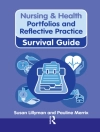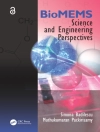This comprehensive book provides an excellent overview on the role of the scrub and circulating nurse during minimally invasive procedures and a detailed description of the specific instruments adopted during surgical procedures in each subspecialty areas as esophago-gastric, colorectal, endocrino-metabolic, hepato-biliary, spleno-pancreatic and abdominal wall surgery. The concept that laparoscopy now allows everyone to actively see all the surgical steps and therefore to be no longer just a simple “another man/woman in the theatre” but an active actor. The need therefore for all the nurses – and above all the scrub ones – to know and to have the knowledge – and therefore to have in a sort of parallelism thanks to this manual – the purely medical surgical steps with the corresponding and parallel nursing ones: an added value in the training and preparation of the all the people involved in surgery.
This practical book correlated by images guides scrub nurse in all operative phases.
The Scrub Nurse in Minimally Invasive and Robotic General Surgery also explores the legal aspects in the scrub nursing.
The Italian Society of Endoscopic and Laparoscopic Surgery & New technologies and the Italian Association of Scrub Nurses endorse this book.
Tabella dei contenuti
PART I (AICO) The evolution of the scrub nurse in laparoscopic and robotic surgery.- Chapter 1.The laws about nurses, professional autonomy and the professional profile.- Chapter 2. Modern nursing, roles, responsibilities.- Chapter 3. Ethics and legal aspects in scrub nursing.- PART II (AICO) The management of instruments and technologies.- Chapter 4. Sterilization.- Chapter 5. Storage 2.3 Activation and functioning.- PART III (Wanda Petz) Access techniques in minimally invasive surgery.- Chapter 6. Open laparoscopic access.- Chapter 7. Closed laparoscopic access.- PART IV (Alberto Arezzo) Instruments and new technologies.- Chapter 8. High energy devices.- Chapter 9. Robotic Platform.- Chapter 10. ICG 4.4 Optical devices.- PART V (Marco Milone) Interventions protocols in esophago-gastric surgery.- Chapter 11. Laparoscopic treatment of functional esophago-gastric diseases.- Chapter 12. Robotic treatment of functional esophago-gastric diseases.- Chapter 13. Laparoscopic treatment of esophageal tumors 5.4 Robotic treatment of esophageal tumors.- Chapter 14. Laparoscopic treatment of gastric tumors.- Chapter 15. Robotic treatment of gastric tumors.- PART VI (Mario Guerrieri) Interventions protocols in colorectal surgery.- Chapter 16. Laparoscopic treatment of inflammatory diseases.- Chapter 17. Robotic treatment of inflammatory diseases.- Chapter 18. Laparoscopic treatment of appendiceal diseases.- Chapter 19. Robotic treatment of appendiceal diseases.- Chapter 20. Laparoscopic treatment of right colon tumors 6.6 Robotic treatment of right colon tumors.- Chapter 21. Laparoscopic treatment of left colon tumors.- Chapter 22. Robotic treatment of left colon tumors.- Chapter 23. Laparoscopic treatment of rectal tumors.- Chapter 24. Robotic treatment of rectal tumors.- Chapter 25. Laparoscopic transanal treatment of rectal tumors.- Chapter 26. Robotic transanal treatment of rectal tumors.- PART VII (Gianfranco Silecchia) Interventions protocols in endocrino-metabolic surgery.- Chapter 27. Minimally invasive treatment of tyroideal diseases.- Chapter 28. Robotic treatment of tyroideal diseases.- Chapter 29. Laparoscopic treatment of adrenal diseases.- Chapter 30. Robotic treatment of adrenal diseases.- Chapter 31. Laparoscopic treatment of morbid obesity.- Chapter 32. Robotic treatment of morbid obesity.- PART VIII (Ferdinando Agresta) Interventions protocols in hepato-biliary surgery.- Chapter 33. Laparoscopic treatment of gallbladder diseases.- Chapter 34. Robotic treatment of gallbladder diseases.- Chapter 35. Laparoscopic treatment of hepatic diseases 8.4 Robotic treatment of hepatic diseases.- Chapter 36. Laparoscopic treatment of the extrahepatic biliary duct diseases and biliodigestive anastomosis.- PART IX (Diego Cuccurullo) Interventions protocols in spleno-pancreatic surgery.- Chapter 37. Laparoscopic treatment of splenic diseases.- Chapter 38. Robotic treatment of splenic diseases.- Chapter 39. Laparoscopic treatment of duodenocephalopancreatic tumors.- Chapter 40. Robotic treatment of duodenocephalopancreatic tumors.- Chapter 41. Laparoscopic treatment of distal pancreatic disease 8.6 Robotic treatment of distal pancreatic diseases.- PART X (Alberto Sartori) Interventions protocols in abdominal wall surgery.- Chapter 42. Laparoscopic preperitoneal treatment of inguinal hernia.- Chapter 43 Robotic preperitoneal treatment of inguinal hernia.- Chapter 44. Laparoscopic extraperitoneal treatment of inguinal hernia.- Chapter 45. Robotic extraperitoneal treatment of inguinal hernia.- Chapter 46. Laparoscopic treatment of ventral hernia.- Chapter 47. Robotic treatment of ventral hernia.
Circa l’autore
Prof. Marco Milone graduated in Medicine and Surgery at “Federico II” University in Naples (Italy) highest grade level
cum laude. HE received his Ph D in Surgical Science and Diagnostic/Therapeutic Technologies at “Federico II” University in Naples. He is Fellow of the American College of Surgeons and Fellow of the European Board of Surgery in Minimally invasive Surgery. Marco Milone is
Associate Professor of Surgery at the University of Naples “Federico II”, m
ember of the Scientific Committee of Interuniversity Centre for Technological Innovation in Surgery,
Proponent of the Master “Robotic Surgery in General Surgery” at the University of Naples “Federico II”,
Director of the School in Technological Innovation in Surgery of the Italian Society of Surgery,
Coordinator of the Colorectal Cancer Network of the Italian Society of Surgical Oncology,
Member of the Research Committee of the European Association of Endoscopic Surgery and Member of the executive Board of Intalian Siciety of Endoscopic Surgery.
Ferdinando Agresta, MD, is Chief of the General Surgery Department of the Vittorio Veneto Hospital (North-Eastern Italy). His main field of interest is laparoscopic surgery, in particular in the emergency setting, and the analysis of the laparoscopic approach outcomes in both scheduled and emergency surgery in the elderly. He has been the main investigator in several studies on emergency and elective laparoscopy and the former President of the Italian Society of Laparoscopic Surgery and New Technologies (SICE).
Mario Guerrieri, MD: Prof. Mario Guerrieri was born in Ancona. He graduated from Scientific High School and enrolled at the Faculty of Medicine and Surgery of Ancona.
Since November 2012 he has been Director of the Surgical Clinic of the Ospedaliero-Universitaria Ospedali Riuniti of Ancona; since 2019 the SOD of Emergency Surgery has been annexed to this department with a new name: General and Emergency Surgical Clinic. He is Director of the Department of Experimental and Clinical Medicine. He is Coordinator of the Ph D in Human Health of the Politecnica della Marche He is currently a member of the Academic Senate. From October 2021 he holds the position of President of the Italian Society of Endoscopic Surgery and New Technologies (SICE) He directed the graduate school in General Surgery for three years. He boasts over 10, 000 interventions as first operator, of which more than 70% with minimally invasive techniques.
Wanda Petz, MD is a surgical oncologist working at the European Institute of Oncology in Milano. She began her surgical residency in Italy and then moved to Paris, France, for the last three years of residency and for a total of six years.
In France her interests focused on minimally invasive laparoscopic surgery but she collected a wide experience even on general and emergency surgery working in large university hospitals.
Since 2011 she is an attending surgeon at the European Institute of Oncology where her activity is mainly dedicated to colorectal cancer surgery.
She has a large experience in laparoscopic and robotic surgery, she is member of the faculty and tutor for the Italian School of Robotic Surgery in Grosseto. She has been member of the Executive Board of the SICE (Società Italiana di Chirurgia Endoscopica) from 2015 to 2021 and Treasurer of the society from 2019 to 2021. She is a member of the Technology Commettee of the EAES (European Asosciation for Endoscopic Surgery).
Alberto Arezzo, MD, Associate Professor of Surgery at the University of Torino, Italy, under Mario Morino, he has a long clinical experience in minimally invasive surgery and colorectal cancer. Educated at the University of Tuebingen under Gerhard Buess, he was initiated to surgery through the transanal approach first and to design operative techniques and devices for flexible endoscopy, becoming a pioneer of Natural Orifices Translumenal Endoscopic Surgery (NOTES). His interest in the field of technologies included the application of robotics and the development of microrobots for endoluminal surgery (see RED – Robot for Endoscopic Dissection patent). He is Research Lead at Minimally Invasive Therapy & Innovation Centre, University of Torino. Former Chair of the Technology Committee, he is now General Secretary of the European Association Endoscopic Surgery (EAES).
Salvatore Casarano, Msn, RN Currently, Nursing Professor in Bari University. He obtained his degree in nursing in 1982 and subsequently obtained the masters in nursing coordination. He is Nursing Coordinator in multidisciplinary operating room block at the “Pia Fondazione Panico” hospital in Tricase (Lecce). He
was the President of Italian Operating Room Nurse Association (A.I.C.O.). Currently scientific coordinator of AICO.












